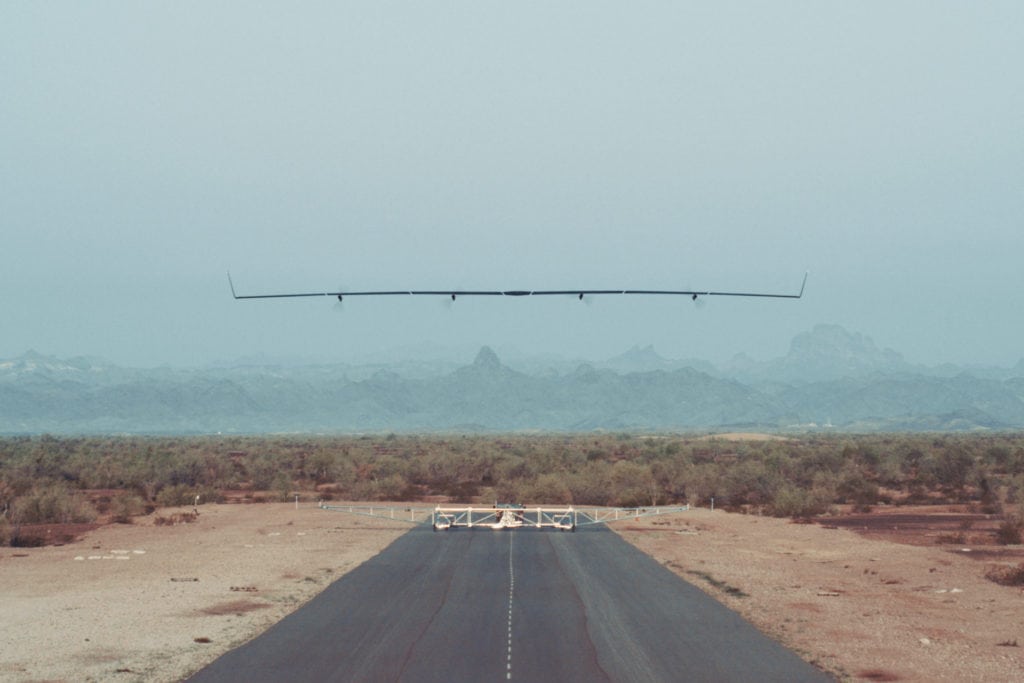
Facebook’s Aquila UAS. Photo courtesy of Facebook
Facebook’s Aquila has taken a second full-scale test flight, the company said. This unmanned aircraft system aims to bring connectivity to areas of the world with outdated or no access to the internet — up to 66% of the of the planet. Aquila’s first flight was June 28, 2016. For this second flight, Facebook said it improved upon the lessons it learned last year.
For this second flight in Yuma, Arizona, Aquila was sporting new “spoilers” on its wings, hundreds of sensors, modified autopilot, new integrated radios for the communication subsystem, smoother finish and a horizontal propellers stopping mechanism. The flight, which happened in May, lasted for 1 hour 46 minutes and “landed perfectly,” Facebook said.
Aquila does not have traditional landing gear. Facebook said it lands on Kevlar pads bonded to the bottom of the motor pods. Since the drone lands at very low groundspeed and descent rates, the gear saves weight and drag that would occur with struts and wheels. The company said another reason for the nontraditional gear is that because of the batteries in the motor pods, that’s where much of Aquila’s mass is concentrated.
Despite the “perfect” landing, the aircraft did end up with a few dings, which Facebook said are easy to repair. But since the aircraft landed on gravel, it was to be expected.
The next step, the company said, is to take lessons learned from this second flight and continue the program’s progress.
Aquila has a wingspan wider than a Boeing 737 and a carbon fiber composite airframe that weighs fewer than 1,000 pounds. Eventually, Facebook aims to launch hundreds of Aquilas to provide internet to the 4.1 billion people who do not have access to a proper connection.
Click here to read Facebook’s full announcement.